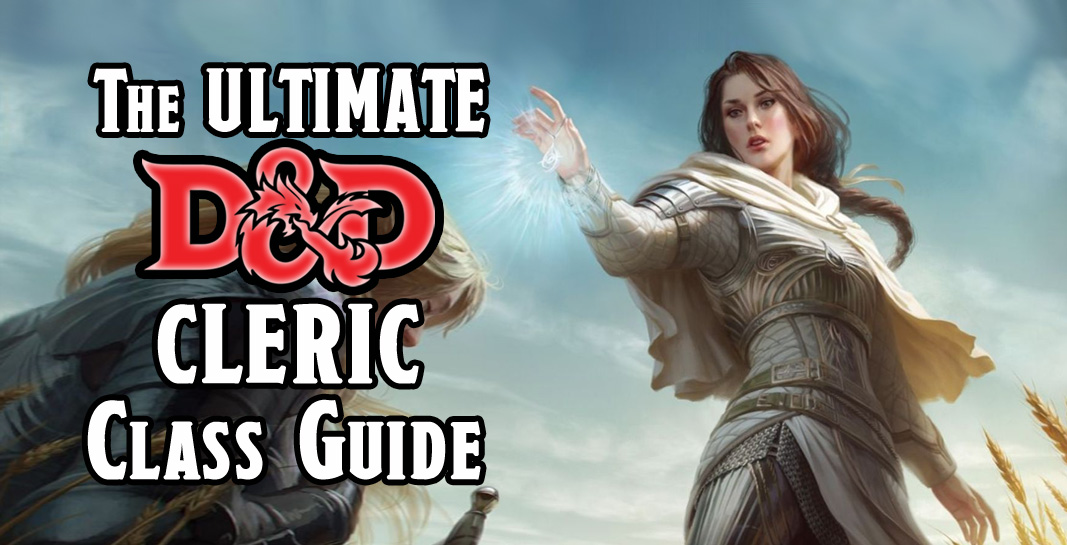
Clerics are holy warriors, devout protectors, and pious guardians of those who cannot defend themselves. They are a versatile bunch that draw power from their faith and the deities that sponsor them. Depending on the belief of the individual Cleric, their abilities can vary drastically. Some heal, some harm, and some walk the line in between.
Clerics are a very diverse and fun to play class. They gain abilities from choosing a divine domain, which determines their party role. All clerics are primary healers and support characters, given their base spell list. However, depending on the domain, a Cleric can be a blaster caster, a ranged weapon attacker, a melee attacker, or a stout defender who soaks up damage and entangles opponents. Clerics are a great class for a novice player for their inherent survivability, or for an experienced player who can better empower and support the rest of the party.
Follow this guide to discover how to best optimize the skills, weapons, features, and abilities for a D&D 5e Cleric class character build. While the options presented here may be the optimal build for a cleric (in my opinion), the beauty of D&D character creation is that the only limit is your imagination so feel free to build your character whichever way you want to.
The guide that follows uses a color-coding system to rank the abilities granted.
Blue = An essential, class-defining ability you would be remiss to overlook.
Green = A strong choice for your class.
Orange = Average option, useful in specific circumstances
Red = Below average, extremely situational, or otherwise just bad.
All features and abilities are from the core rulebook set (Player’s Handbook, Monster Manual, and Dungeon Master’s Guide) unless otherwise attributed.
Party Role
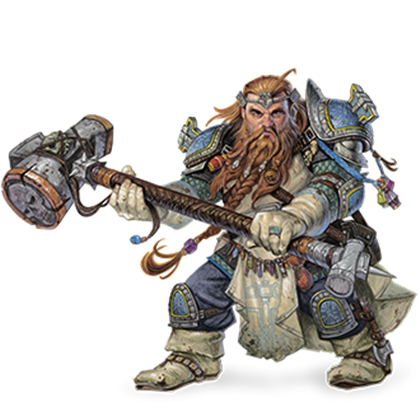
Clerics are the ultimate team players. Most of their abilities and spellcasting revolve around supporting their allies both in and out of combat. Clerics are primary healers, able to sooth wounds and remove diseases and curses.
Proficiency with weapons and armor depends on the divine domain selected, so a cleric can choose to take a purely support role, or function as a front liner. Seldom does the cleric become the face of the party, but they are fully capable of this as well.
Strengths:
- The basic cleric package grants proficiency with light and medium armor, shields, and simple weapons, providing the basic combat package.
- The Cleric spell list is expansive and versatile, providing support and damage dealing spells, which can be prepared daily.
- The variety of Divine Domains makes clerics a versatile class. The available options grant additional spells not normally found on the cleric spell list, and those spells are always prepared.
Weaknesses:
- With d8 hit dice, clerics are not as resilient as those they support.
- Clerics only gain one good saving throw proficiency.
- The Cleric skill list is short and lacking in usefulness outside of Medicine.
Check out this video by Don’t Stop Thinking which summarizes the D&D Cleric Class:
Ability Scores
Strength: Clerics are primarily ranged support, but with the basic weapons package they only have melee options for good damage. A decent strength will put you in a position to be useful while trying to heal in melee if you stick around after.
Dexterity: Unless you’re going the lightly armored route, Dexterity isn’t very important. 14 Dexterity grants you the maximum bonus in medium armor.
Constitution: You’re the party’s primary healer. If you go down, so does everyone else. Make sure you’ve got high enough Con to keep you alive long enough to spread your healing around.
Intelligence: Generally unimportant for Clerics. You can use this as your dump slot.
Wisdom: Cleric spellcasting is based on Wisdom, so you’re going to want this to be as high as possible.
Charisma: Persuasion is the only Charisma-based skill Clerics get. Unless you pick up any more skills from your background, you can use this as a dump slot as well.
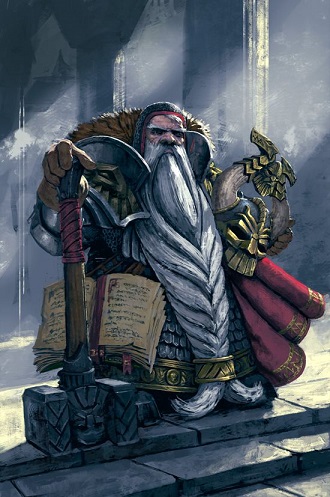
Races
Greyhawk and Forgotten Realms Races
AarakocraEEPC: The Dexterity and Wisdom bonuses make this race a great lightly armored cleric. Flight gives you excellent mobility to provide support to your allies.
AasimarVGtM: The Charisma bonus is lost on Cleric, but flavor-wise this is a great option.
Fallen: A Melee cleric works well here.
Protector: The best option for any Cleric domain, flight and Strength bonuses.
Scourge: Constitution increase and extra damage, which stacks with some of the Cleric domain damage bonuses turns you into an offensive powerhouse.
BugbearVGtM: This race makes a decent heavily-armored melee Cleric who isn’t looking to have a high spell save DC.
DhampirVRGtR: Not very god for Cleric.
Dragonborn: Hardly useful as a Cleric.
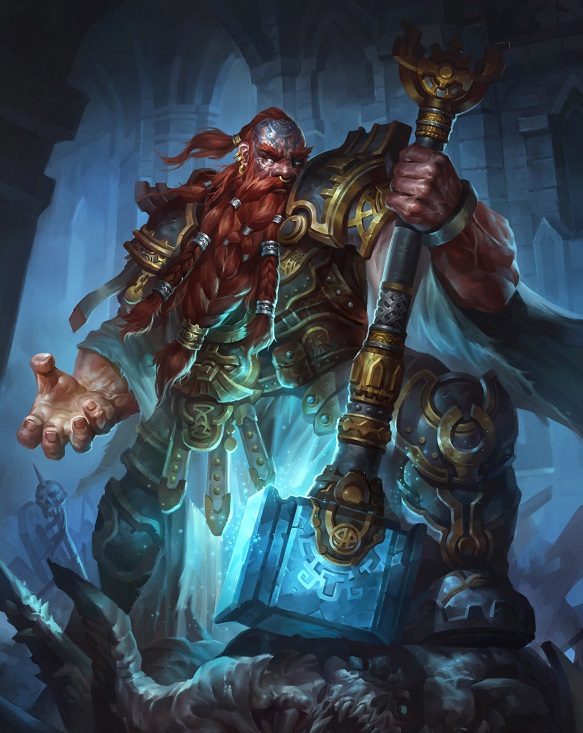
Dwarf: The base Constitution increase makes Dwarves a solid choice for a resilient Cleric.
Hill Dwarf: Arguably the best overall option for a Cleric build. Bonus Wisdom and Constitution coupled with the extra hit points makes you incredibly resilient.
Mountain Dwarf: The Strength and Constitution make a Melee cleric strong, but without Wisdom, the spellcasting suffers.
DuergarSCAG: Similar to Mountain Dwarf, but also the huge drawback of sunlight sensitivity.
FairyTWBtW: Being restricted to light armor is rough, but the mobility flight offers when playing a support character is hard to ignore.
FirbolgVGtM: Strength and Wisdom bonuses play well to your strengths. The passive abilities and spellcasting are quite useful.
GenasiEEPC: The Constitution bonus is useful, but all the other abilities are either situational or useless.
Air: Nothing useful for the Cleric.
Earth: Nothing useful for the Cleric.
Fire: Nothing useful for the Cleric.
Water: The Wisdom bonus makes this the only useful Genasi subrace worth considering.
GithMToF: both Gith subraces make excellent Cleric builds.
Githyanki: Strength bonus, weapon proficiencies, and spellcasting make a good melee Cleric build.
Githzerai: Wisdom increase, Mental Discipline, and spellcasting make a great support Cleric.
Gnome: Gnomes don’t gain any useful abilities for Clerics.
Deep (Svirfneblin)EEPC/SCAG: Nothing useful for the Cleric.
Forest: Nothing useful for the Cleric.
Rock: Nothing useful for the Cleric.
GoblinVGtM: Nothing useful for the Cleric.
GoliathVGtM/EEPC: Goliaths make resilient and beastly melee clerics, but their prominence diminishes your role as a support character.
Half-Elf: Half Elves make a decent choice for any class. The Charisma bonus is wasted on a Cleric, but the flexibility provided means you can choose to spec for whatever type of character you’re looking to play.
Standard: the choice of skills allows you to make up for whatever you’re lacking in class or background skills.
AquaticSACG: Useful in an aquatic campaign.
DrowSCAG: Access to faerie fire is useful.
Moon/SunSCAG: Access to wizard cantrips is useful.
WoodSCAG: Access to a better weapon option is good for a melee build, but a different race would provide a better advantage.
Half-Orc: Nothing useful for the Cleric.
Halfling: Not a strong choice for Cleric.
Lightfoot: Nothing useful for the Cleric.
GhostwiseSCAG: Trickery domain clerics see a little bit of synergy here.
Stout: Nothing useful for the Cleric.
HarengonTWBtW: Quick initiative is important for a support character looking to set up buffs and position.
HexbloodVRGtR: This race grants you a few spells which aren’t very commonly used by clerics, but are useful none the less
HobgoblinVGtM: Nothing useful for the Cleric.
Human: Humans make a great choice for any class.
Standard: This ensures your ability to switch between melee and support.
Variant: The better option, prioritizing Wisdom and Constitution with the ability score increases and gaining a feat at first level is grand.
KenkuVGtM: High synergy for a lightly armored trickery domain Cleric.
KoboldVGtM: Nothing useful for the Cleric.
LizardfolkVGtM: With their natural armor, Lizardfolk make a great unarmored Cleric.
OrcVGtM: Nothing useful for the Cleric.
RebornVRGtR: This is a mediocre race at best.
TabaxiVGtM: Nothing useful for the Cleric.
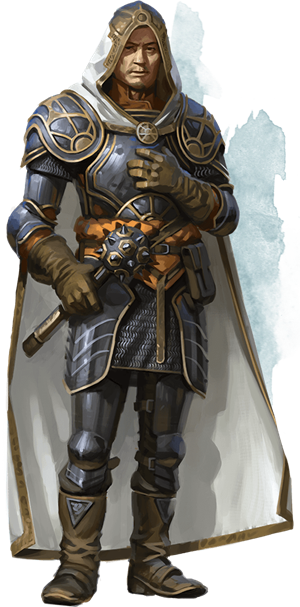
Tiefling: Generally not a useful choice for Clerics.
Standard: Nothing useful for the Cleric.
Devil’s TongueSCAG: Nothing useful for the Cleric.
FeralSCAG: Nothing useful for the Cleric.
HellfireSCAG: Nothing useful for the Cleric.
WingedSCAG: Poor ability scores are somewhat redeemed by the mobility granted by flight.
AsmodeusMToF: Nothing useful for the Cleric.
BaalzebulMToF: Nothing useful for the Cleric.
DispaterMToF: Nothing useful for the Cleric.
FiernaMToF: Wisdom increase, and spellcasting based in Charisma.
GlasyaMToF: Nothing useful for the Cleric.
LevistusMToF: Nothing useful for the Cleric.
MammonMToF: Nothing useful for the Cleric.
MephistophlesMToF: Nothing useful for the Cleric.
ZarielMToF: Nothing useful for the Cleric.
TortleXGE/TP: An incredibly powerful melee build. The ability scores and natural armor are great.
TritonVGtM: Nothing useful for the Cleric.
Yuan-Ti PurebloodVGtM: Nothing useful for the Cleric.
Eberron Races
ChangelingERLW: The flexibility is helpful, but still not optimal for a Cleric build.
KalashtarERLW: Wisdom and resistances, but nothing else useful.
OrcERLW: Nothing useful for the Cleric.
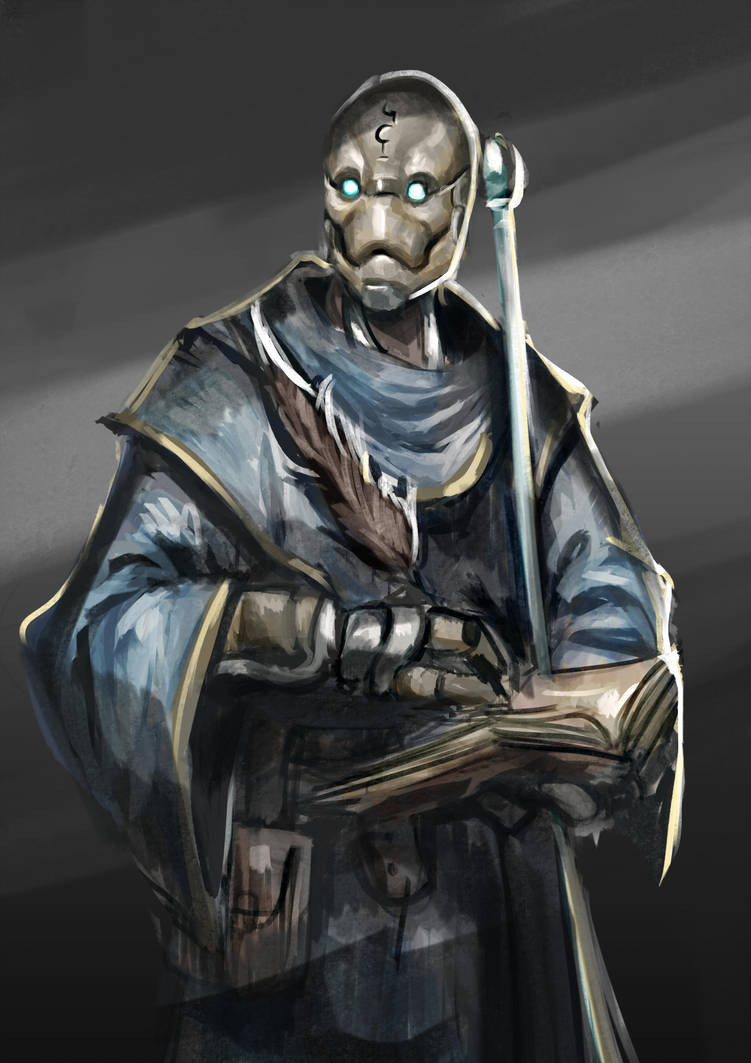
ShifterERLW: The variety in subraces grants differing usefulness.
Beasthide: Useful for a Melee Cleric not looking for a high Spell save DC, for lack of a Wisdom bonus.
Longtooth: Strictly worse than Beasthide for Clerics looing to be melee combatants.
Swiftstride: Nothing useful for the Cleric.
Wildhunt: This makes a good lightly armored Cleric. The shifting bonus to Wisdom checks includes checks made with Spellcasting. Consider taking dispel magic and counterspell.
WarforgedERLW: The flexibility in character creation allows you to increase your Wisdom, and create a very resilient and versatile Cleric. The resistances and immunities coupled with your alertness while resting make you a great sentry/bodyguard for a much more frail character.
Strixhaven Races
OwlinSACoC: To maintain your ability to fly, you’re restricted to light armor. Chances are you’re going to be wearing medium or heavy as a Cleric.
Ravnica Races
CentaurGGTR: Centaur Melee Clerics are a force to be reckoned with. The ability score increases coupled with increased speed allow them to secure positioning and wreak havoc.
LoxodonGGTR: Excellent ability scores and other passive abilities.
MinotaurGGTR: Nothing useful for the Cleric.
Simic HybridGGTR: Versatile and powerful in any case.
VedalkenGGTR: Good ability scores, but no useful abilities for Clerics.
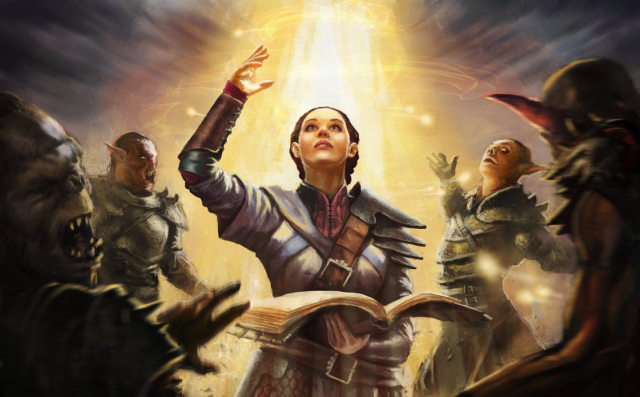
Class Features
Hit Dice: With d8 hit die, Clerics are middle of the road in terms of hit points.
Weapon Proficiencies: Clerics gain simple weapon proficiency in the base package.
Armor Proficiencies: The basic Cleric gains proficiency with medium armor and shields.
Tool Proficiencies: None.
Saving Throws: Wisdom and Charisma saves provide coverage against the most debilitating effects higher-level spells can inflict on a character. If you can pick up Constitution saves, you’ll be well stacked against turn-wasters and death effects.
Channel Divinity: Turn undead is situational, but when it comes up it’s the best way to deal with a horde of skeletons or zombies. It buys you time to escape or takes the pressure off while you pick them off one at a time. Don’t bother wasting it on single powerful undead, they’re likely to pass the save and cause you to waste an action. Your domain provides you with a much more useful option for this trait. It recharges after a short rest, so make sure to use it frequently.
Destroy Undead: If they’re weak enough to be destroyed by this trait, you’re probably going to catch them in an AoE spell instead.
Divine Intervention: This ability isn’t reliable until you’re 20th level. It’s very unreliable, but when it works it works great. You’re going to need to work with your dungeon master on the exact effect. If you’ve got an open minded and creative dungeon master, you’re going to have a lot of fun with this.
Divine Domains
ArcanaSCAG
The Arcana domain gives the Cleric a few options similar to Wizards, including a lot of great utility spells that makes a party lacking in arcane casting a little more proficient at unraveling mysteries revolving around enchantments, magical traps, and the like.
Domain Spells: A solid list of utility spells that the Cleric normally lacks. There are also a couple solid damage-dealing spells available as well.
1st-Level: Magic missile and detect magic are two default wizard spells which provide great value at low levels.
3rd-Level: Both of these spells are outclassed by other Cleric spells at the same level.
5th-Level: Dispel magic is another default Wizard spell you’ll find yourself using on most days.
7th-Level: Arcane eye is a better scrying spell than anything on the Cleric list.
9th-Level: Plane shift and teleportation circle together give you great transportation options.
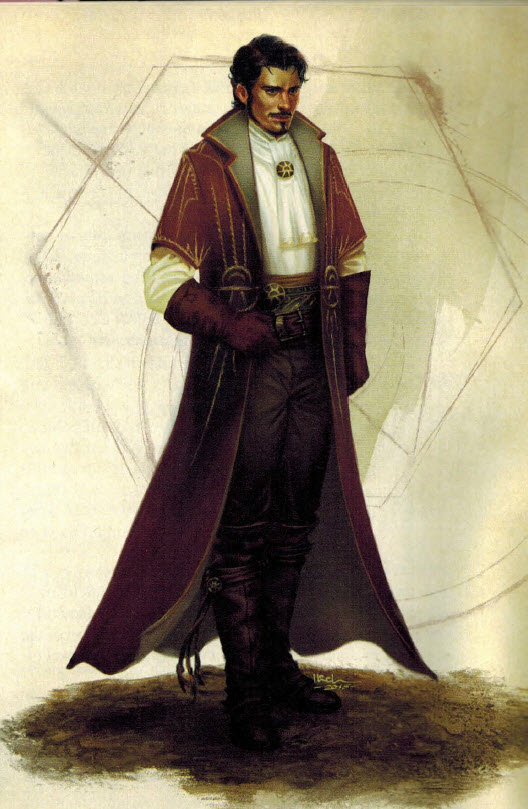
Channel Divinity – Arcane Abjuration: The ability to turn (and eventually banish!) other creature types aside form undead.
Arcane Initiate: Two cantrips and Arcana proficiency give you some useful options when playing budget Wizard.
Spell Breaker: Casting healing word or cure wounds at higher levels will make great use of this ability.
Potent Spellcasting: Extra damage to your cantrips gained with Arcane Initiate.
Arcane Mastery: This ability is incredibly versatile, and turns you into a top-tier wizard.
DeathDMG
An offensive domain, Death grants you martial weapon proficiency and options for dealing necrotic damage. This domain lacks support or utility options, so if your party wants buffs they may are going to need to look to other casters.
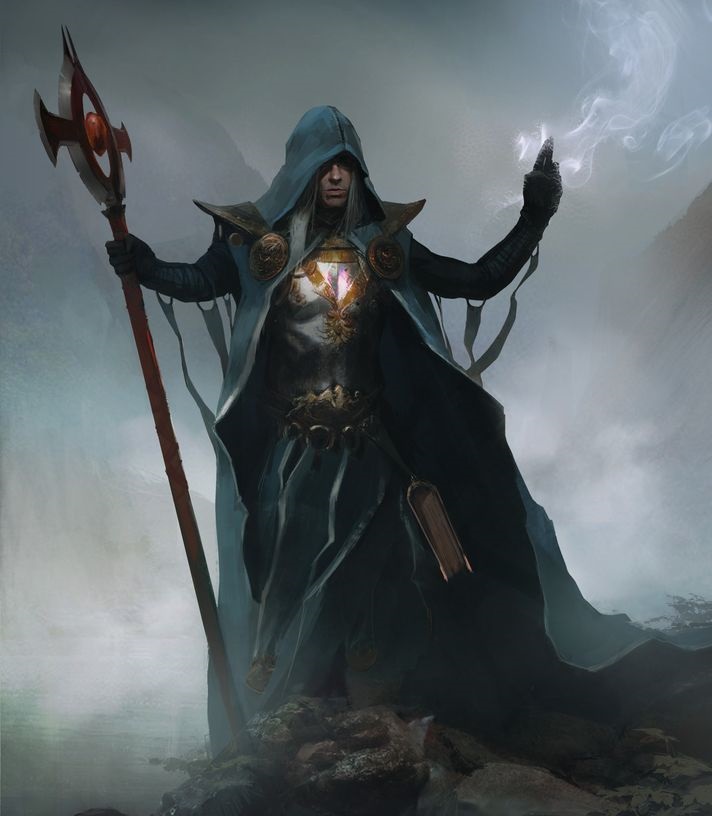
Domain Spells: This domain grants a few spells that aren’t on the Cleric list.
1st-Level: False life grants temporary hit points that are much appreciated at low levels.
3rd-Level: Both of these spells have a short duration, require concentration, and allow continuous saves which severely limits their usefulness.
5th-Level: Animate dead is a neat spell for summoning meat shields, and vampiric touch is a nice combo of life gain and damage dealing that Clerics don’t normally have access to.
7th-Level: Death ward is already on your list, but you’re going to want to cast it daily, so not having to use a preparation slot on it is nice.
9th-Level: Antilife shell is a strong deterrent. Cloudkill is a flavorful AoE that does decent damage.
Channel Divinity – Touch of Death: A necrotic damage smite that scales with level makes this build a great melee combatant.
Bonus Proficiency: Martial weapons! Your damage output increases dramatically with the ability to wield two-handed weapons or take two-weapon fighting with blades.
Reaper: Chill touch and Toll the Dead are your only viable options here, but in the right circumstances this can be quite potent.
Inescapable Destruction: By the time you get this ability, you’ll be doing increased cantrip damage with toll the dead and chill touch. This ensures you always hit your mark.
Divine Strike: Additional damage that ensures your attacks keep up with your cantrips.
Improved Reaper: Dual targeted inflict wounds and the like is a huge damage dealer.
ForgeXGtE
The Forge domain is for a dedicated front-line Cleric. It provides strong damage options, a great spell list, and a lot of great flavor for the class. Hands down the best Cleric option for the player who wants to participate in combat and not get stuck as the party’s medic.
Domain Spells: Almost all the options afforded to a Forge Cleric are not from the Cleric list, expanding your magical horizons. Each level selection grants a more potent weapon.
1st-Level: Identify is situationally useful, but still a welcome addition to your stable of spells. Searing smite is a must have and frequently useful spell to deal extra damage.
3rd-Level: Heat metal is a great way to separate a foe from his weapons. Magic weapon ensures you’ll always cut through damage resistances before you’re able to get a magic weapon of your own.
5th-Level: Elemental offense and defense in one tight package.
7th-Level: Wall of fire is amazing battlefield control, but unfortunately requires your concentration.
9th-Level: Animate objects turns you into a squad of danger. Creation is also a ton of fun, and very flavorful for you.
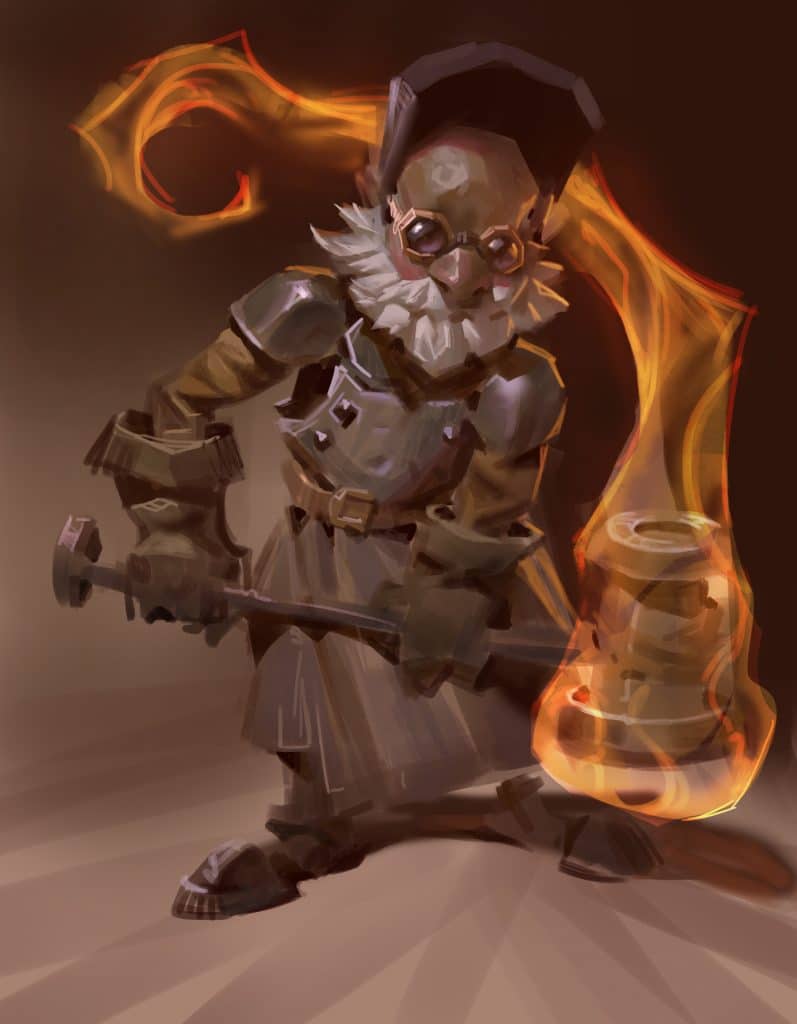
Channel Divinity – Artisan’s Blessing: Situational and flavorful, but potentially very useful.
Bonus Proficiencies: Heavy armor. All a melee Cleric could ask for…aside from martial weapon proficiency
Blessing of the Forge: A free +1 weapon or +1 armor is amazing. You can give it to a friend too, it doesn’t have to be an item you are using.
Divine Strike: A boost to melee damage. Stacks with your smite.
Saint of Forge and Fire: A fantastic capstone. One of the only ways to get damage type immunity, and a bunch of resistances as well.
GraveXGtE
The grave domain is a spellcasting-focused Cleric build that grants you a selection of healing, damaging, and debuff spells. It’s not the most powerful Cleric domain, but it’s quite versatile.
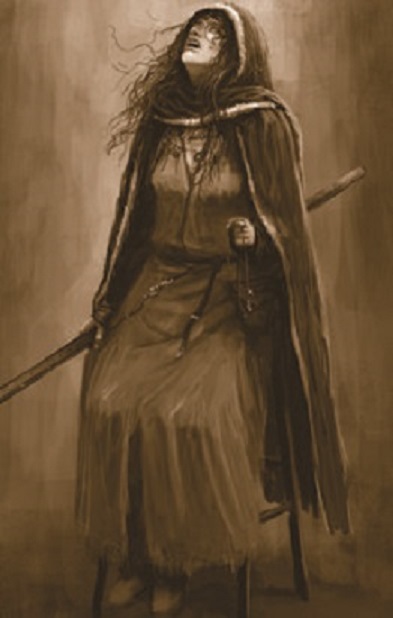
Domain Spells: An excellent selection of spells you’re going to get a lot of use out of. The biggest drawback is the soft spot at third level.
1st-Level: False life is the standout here, as the extra hit points are very useful at low levels.
3rd-Level: An underwhelming couple of additions to your spell list.
5th-Level: Revivify is a great spell to have in your back pocket. You never know when you’ll need it, and it stinks when you need to waste a prepared spell on it. Vampiric touch is another great spell not normally available to Clerics that you hopefully won’t need to use.
7th-Level: Blight is a solid damage-dealing spells that’s particularly effective against plants, and death ward is a great all-day buff that’s also an insurance policy.
9th-Level: A defensive self-buff and a way to summon minions to your aid.
Channel Divinity – Path to the Grave: This ability is an absolute powerhouse combined with a Rogue’s sneak attack, or a spellcaster with a single-target spell that deals lots of damage.
Circle of Mortality: This turns your cure spells into powerful resurrection spells, if you can get to the fallen character fast enough.
Eyes of the Grave: If you’re playing a campaign that involves a lot of undead, this could be useful to find anything lurking, but otherwise this ability is pretty situationally useless.
Sentinel at Death’s Door: You can turn critical hits into normal hits.
Potent Spellcasting: Provided you’ve got a good damage-dealing cantrip on your list, this is helpful in drawn out encounters.
Keeper of Souls: A small amount of healing, but it helps in case of a horde encounter.
Knowledge
The Knowledge domain provides quite a few options for information gathering, both mundane and magical. This Divine Domain really shines in an urban or investigative setting but is inferior to many of the other Cleric domains in dungeoneering adventures.
Domain Spells: The spell list in the Knowledge domain is primarily divination spells, which suffer from a somewhat subjective nature. The prepared spells are ones you’d typically prepare when you need them, so always having access to them isn’t very useful.
1st-Level: Command can be useful in the right circumstance. Identify is situational.
3rd-Level: Suggestion outclasses command. Augury required good communication and coordination with the DM to be really effective.
5th-Level: Neither of these spells are very good in most circumstances and can usually be replaced by good skill checks.
7th-Level: Arcane eye is the best scrying spell available, and confusion is an unreliable debuff even if it sticks.
9th-Level: Both of these spells are situational and subjective, leading to their low level of effectiveness unless your DM is leading you by the nose.

Channel Divinity – Knowledge of the Ages: An on-demand skill proficiency makes you very versatile.
Channel Divinity – Read Thoughts: Situationally useful, but even better when combines with command and suggestion once you know what motivates your target.
Blessings of Knowledge: Two languages and two skills make a great addition to your abilities.
Potent Spellcasting: Adding a bit of damage to your Cleric cantrips is exactly what you need in this Divine Domain, as you don’t get any other combat abilities.
Visions of the Past: A very flavorful, interesting, and extremely subjective ability that comes so late in the class progression that it’s unlikely to make a real impact on a campaign until it’s too late. On another hand, a series of skill checks and divination spells can replace this ability.
Life
The Life Domain is the classic healer and defensive tank Cleric build. It provides solid defensive structure for your party, and all the healing and support you could ask for. No other build can come close to the magnitude of healing this build can deliver.
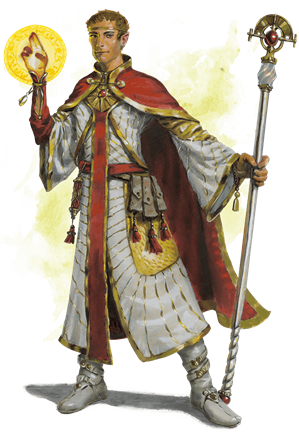
Domain Spells: The lower level Domain spells are Cleric necessities, and will come in handy in any situation you find yourself in. The higher-level spells are on-theme but not as important to have prepared.
1st-Level: You’re going to have these spells prepared anyway, so this is a great savings on your spell list.
3rd-Level: Two more Cleric staples. Having access to lesser restoration at any time is perfect, and spiritual weapon is your constant companion and best use of a bonus action when you don’t need to spend it on healing word.
5th-Level: Beacon of Hope is a great pre-fight buff when you know you’re going to make a lot of saves and need a lot of healing.
7th-Level: Two spells with 8-hour duration that don’t require your concentration.
9th-Level: This is where the domain spells tail off. Mass cure wounds doesn’t compare with your channel divinity, and raise dead isn’t something you need to have prepared always.
Channel Divinity – Preserve Life: The pool of healing here is massive, and scales really well as you level up. If you don’t need to turn undead, spending both your uses of channel divinity on this is great.
Bonus Proficiency: Heavy armor lets you wade into combat without worry, especially if you arm yourself with a shield and a one-handed melee weapon.
Disciple of Life: An extra couple hit points on top of each of your healing spells, especially multi-target ones makes you an unparalleled healer.
Blessed Healer: Give a penny, take a penny. Every heal spell you cast hits you back for some health as well. Combo this with warding bond and ranged healing does more than double duty.
Divine Strike: You don’t get an extra attack so the usefulness provided by this is limited, but on turns where you aren’t healing you can still dish out some respectable damage.
Supreme Healing: Perfect healing with any spell, in addition to all the other passives you already have.
Light
The Light Cleric is half disruption, and half spellcasting damage. It gives a good balance of abilities that play into the ebb and flow of a combat encounter.
Domain Spells: A great selection of radiant and fire damage spells that can compete with the best blaster Sorcerers and Warlocks.
1st-Level: Faerie fire grants a huge advantage if you can catch a whole band of enemies in the area of effect. Burning hands is one of the better low-level AoE spells not normally available to Clerics.
3rd-Level: Flaming sphere is a solid spell, but strictly worse than spiritual weapon. However, if you’ve got the spell slots available to cast both you’re going to deal a ton of damage.
5th-Level: Daylight is situationally useful, but fireball is one the all-around best spells available. Considering Clerics don’t normally get a good AoE until flame strike, picking this up gives you an edge over other builds.
7th-Level: Both spells at this level are great control spells.
9th-Level: Flame strike is something you’re going to prepare regardless, and scrying is off-flavor and situationally useful.
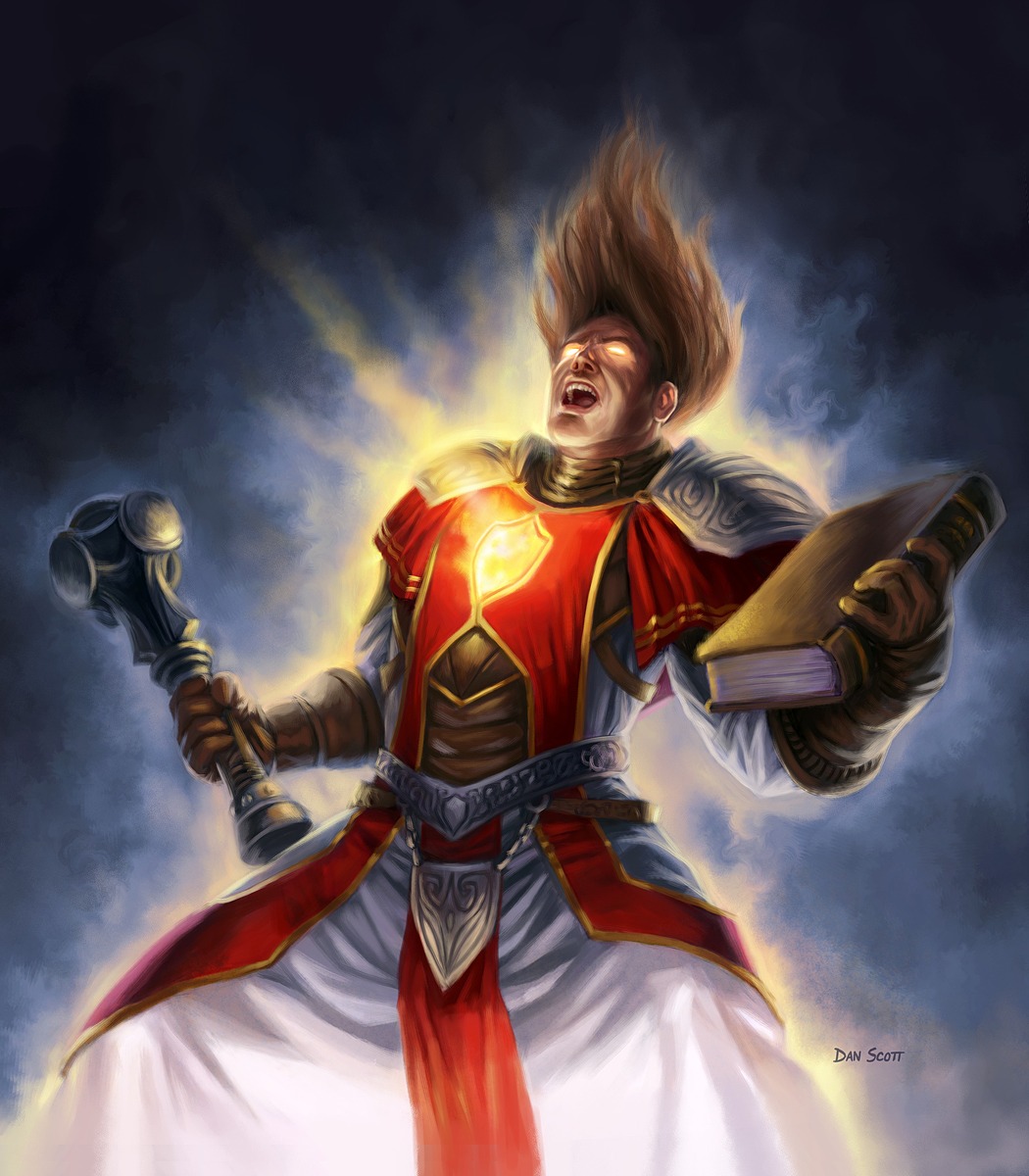
Channel Divinity – Radiance of the Dawn: Dispel magical darkness and AoE damage that selectively targets foes only.
Bonus Cantrip: We get it, you’re a Light Cleric. You can cast Light. If your party has darkvision or a continual flame torch, it’s pretty irrelevant.
Warding Flare: Imposing disadvantage on an attack against you or an ally within range is a solid reaction ability, and you can use it frequently enough that it’s always relevant.
Potent Spellcasting: Considering this build is going to be Wisdom dependent, you’ll likely have 20 Wisdom by 8th level. Adding +5 damage to your cantrips is powerful.
Corona of Light: Considering all your domain spells deal a ton of fire and radiant damage, this is going to come in handy.
Nature
The Nature domain Cleric is a low-budget Druid approximation, which unlike other Divine Domains, isn’t as good as pretending to be a Wizard or a Rogue. The spell list is full of situational and low-power spells. The channel divinity ability is only applicable to a small selection of targets. This domain is a hard sell.
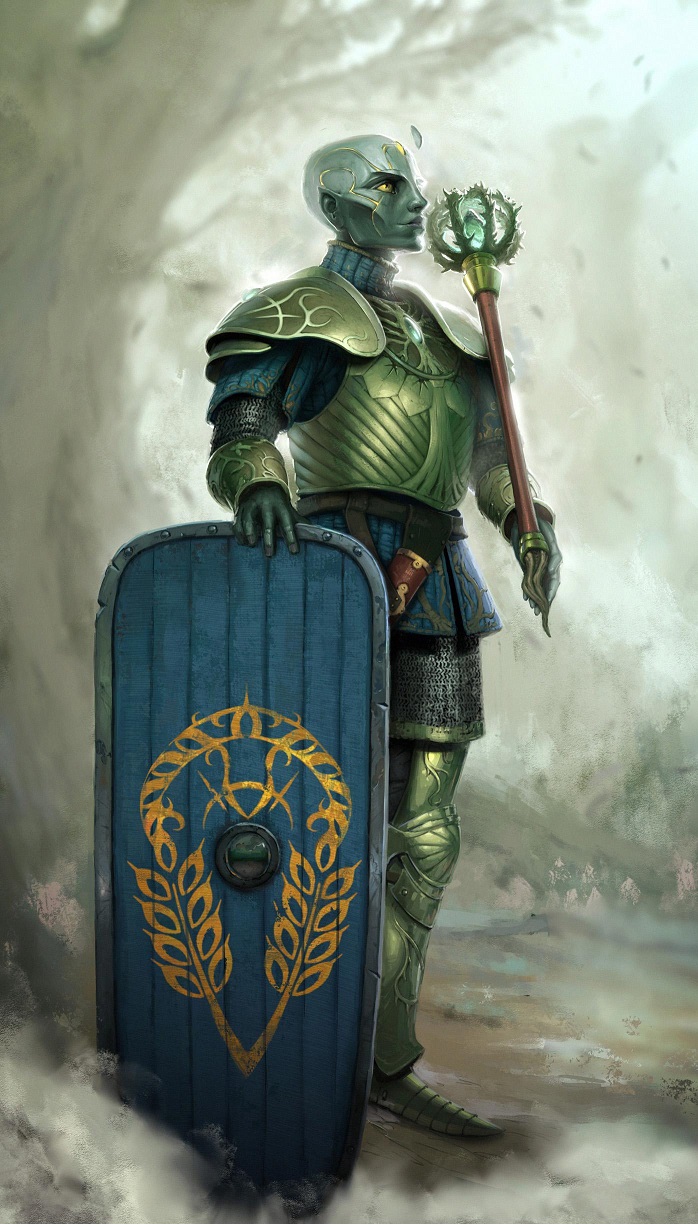
Domain Spells: The Nature list is tough to work with unless you’re fully immersed in the wilds for most of your campaign and beast taming and tracking is a major theme.
1st-Level: Both spells granted by this are very situational. Animal friendship is replaced by a good animal handling check, and how much do plants really have to talk about?
3rd-Level: Barkskin requires concentration, which isn’t worth risking for a second-level spell. Spike growth is solid battlefield control but doesn’t work against climbing or flying foes.
5th-Level: Wind wall is very situational. Plant growth can be a useful control spell but requires some preparation to really shine.
7th-Level: Dominate beast has a narrow target audience, and grasping vine is limited in its effectiveness for the level of spell it requires.
9th-Level: Insect swarm is a solid crowd-control spell, but the effect is stationary. Tree stride is a nifty teleport but can only take you to the forest.
Channel Divinity – Charm Animals and Plants: A good way to ward off wilderness encounters, but again, the target pool for this effect is very limited.
Acolyte of Nature: Druid cantrips are great, especially if you have access to Xanathar’s or Unearthed Arcana.
Bonus Proficiency: Heavy armor gives you front line capabilities.
Dampen Elements: Absorb elements without the spell slot. Not having a restriction on the number of uses for this ability makes it extremely useful.
Divine Strike: Your choice of elemental damage added on to your weapon attacks lets you hunt for weaknesses in elemental foes.
Master of Nature: Another very situational ability.
OrderGGtR
An Order domain Cleric makes a powerful controller and support character. You rely heavily on your spellcasting, so maximizing your Wisdom is a must.
Domain Spells: A great list of buffs, debuffs, and healing spells make for a versatile support character.
1st-Level: Control and a really solid buff spell that scale well.
3rd-Level: Hold person is a potent option, but one that will quickly be outclassed by your other spells. Zone of truth is situational.
5th-Level: Great Cleric healing, and one of the best lower level debuff spells out there.
7th-Level: Compulsion is better than command, but again will be outclassed soon after.
9th-Level: Now we’re talking. Dominate person is the best control spell you’ll get, and commune is the only worthwhile divination-type spell out there.
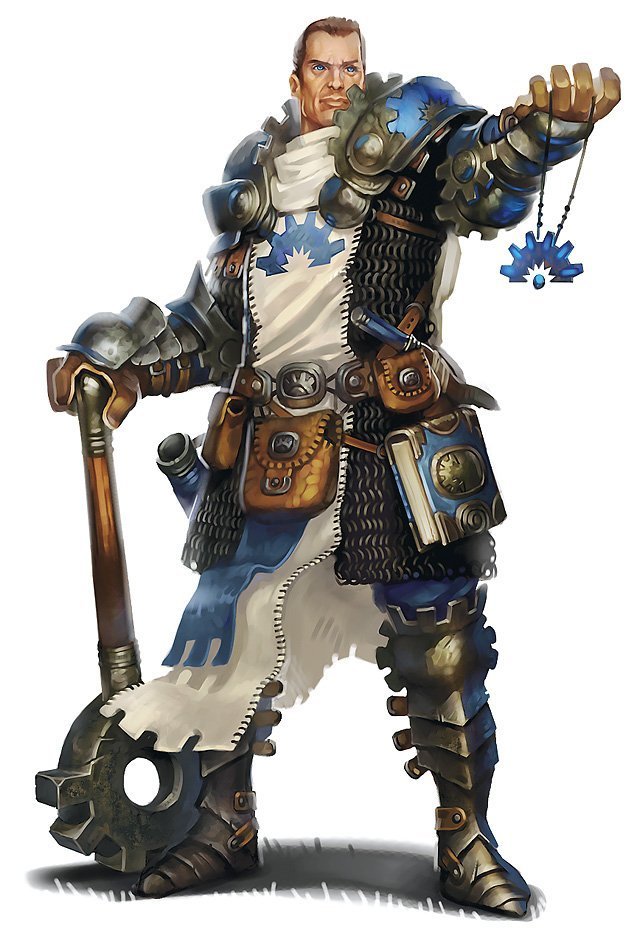
Channel Divinity – Order’s Demand: A wide area of effect that can disarm a horde of enemies. Very useful against humanoids wielding weapons, but totally useless against monsters with natural attacks.
Bonus Proficiencies: Heavy armor and a handful of Charisma-based skills.
Voice of Authority: The ultimate power play, buff an ally and grant them an immediate attack.
Embodiment of Law: This ability is overpowered. When you reach 6th level you’ll go from a decent support character to full controller, casting enchantment spells as a bonus action.
Divine Strike: You’re going to focus more on your spellcasting with this build, but this ability makes sure you can still keep up in melee. The bonus damage comes along with every attack.
Order’s Wrath: At this point, you’ll want to stack your bonus action spells and melee attacks in conjunction with an ally’s attacks to really dish out the damage. You’ll be dealing an extra 4d8 psychic damage if both you and an ally hit the same foe in a round.
Peace
This class is crazy powerful. It gains zero abilities to deal damage, but boy howdy can it keep people alive. If your party is very good at positioning and battlefield control, there is no conceivable way you can lose a level-appropriate encounter with a Cleric of Peace on your side.
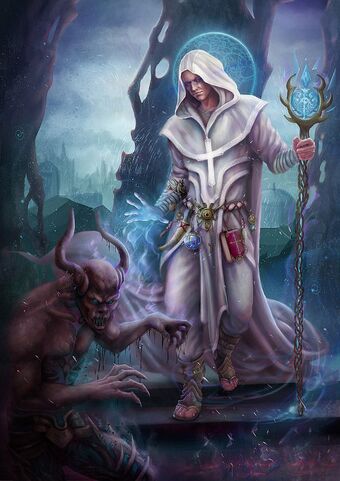
Domain Spells: All your domain spells are healing and defensive options. They fit with your theme and are pretty strong in general.
1st-Level: Two of the best buffs in the game, available to divine casters only.
3rd-Level: Aid is good enough to continue using at higher levels, and with the support this class offers its even better. You’ll mostly be staying out of dodge, so Warding bond is great to have too.
5th-Level: The only soft spot in this class, these spells are very situational.
7th-Level: Resilient Sphere is an opposite of sanctuary, a “time-out” bubble.
9th-Level: Both of these spells are great to have on the list of things you don’t need to prepare every day, since they’re both rather situational.
Implement of Peace: A free skill proficiency of your choice.
Emboldening Bond: This ability is bonkers. You get to use bless multiple times per day with restrictions. It’s easy to ignore them if you’ve got an even number of party members and they like to fight in teams.
Channel Divinity – Balm of Peace: Mobility, healing, and you can do it a bunch of times each day.
Protective Bond: Free mobility for the whole team.
Potent Spellcasting: Ok, I lied, you get an offensive boost in this ability. Given that Cleric cantrips aren’t very good compared to arcane classes, this is still a huge boon in terms of combat effectiveness.
Expansive Bond: Your abilities are crazy powerful already, and doubling their effective distance allows you to operate over a much wider area with the same protections.
Tempest
The Tempest domain grants you a ton of damage-augmentation abilities, both for your spell casting and weapon attacks. You’ll find your roll somewhere between melee front-liner and AoE bomber.
Domain Spells: Each level grants a good selection of spells, one damage and one control.
1st-Level: Thunderwave is one of your staple spells, as it benefits from several of your other class abilities that amplify your thunder damage. Fog cloud is a great battlefield control spell.
3rd-Level: Shatter is an upgrade from Thunderwave in that you can cast it at range. Gust of wind is kind of situational.
5th-Level: Call lightning gives you a repeatable damage source, and a good way to spend your bonus action. Sleet storm is a mediocre AoE.
7th-Level: Control water is situational. Ice storm is a powerful AoE that will tide you over until you gain access to flame strike.
9th-Level: Two great AoE spells with a variety of damage types that make great use of your higher-level spell slots. Destructive wave deals half thunder damage and can benefit from your Destructive Wrath ability.
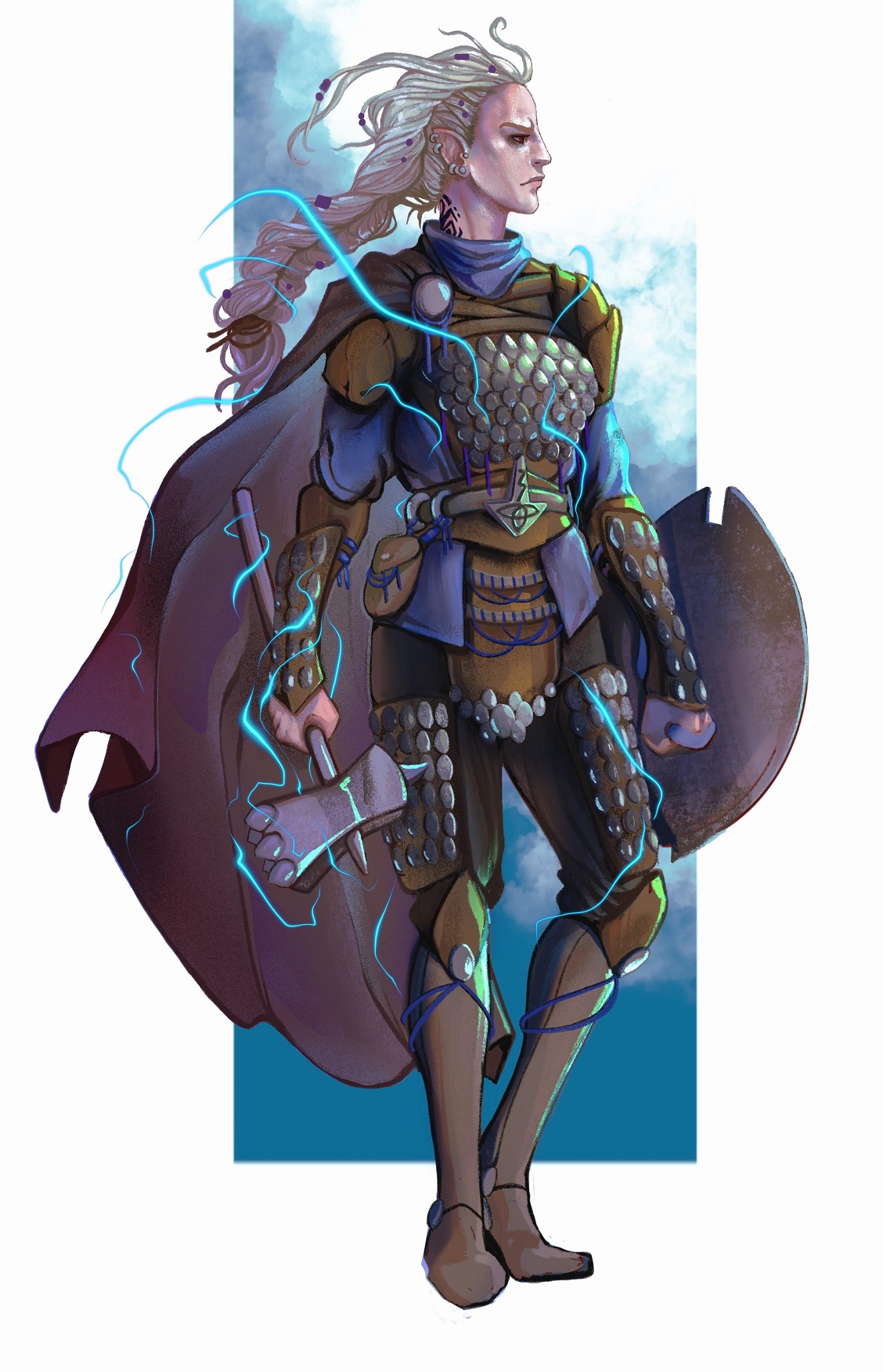
Channel Divinity – Destructive Wrath: It’s a tragedy that this Domain doesn’t allow you to learn lightning bolt. This ability works well with thunderwave or a higher-level call lightning.
Bonus Proficiencies: Martial weapons and heavy armor proficiency put you squarely in the front-liner role. Given your other offensive capabilities, you might consider using a heavy weapon to maximize your damage output.
Wrath of the Storm: At low levels, this can kill lesser enemies, and at higher levels will add chip damage during your onslaught of attacks.
Thunderbolt Strike: This is great for when you use Wrath of the Storm to escape from melee.
Divine Strike: Extra thunder damage on your attacks is great, especially since thunder is an uncommon type for creatures to have resistance. However, not a lot of things are vulnerable to thunder either so it’s an even split.
Stormborn: Flight whenever you’re outside is great. The only shortcoming is if you need to get across an underground chasm and can’t jump it.
Trickery
The Trickery Cleric gains tons of great spells that turn them into a budget Rogue. The rest of the class abilities are tough to use effectively, but a clever player will have a lot of fun playing this divine domain.
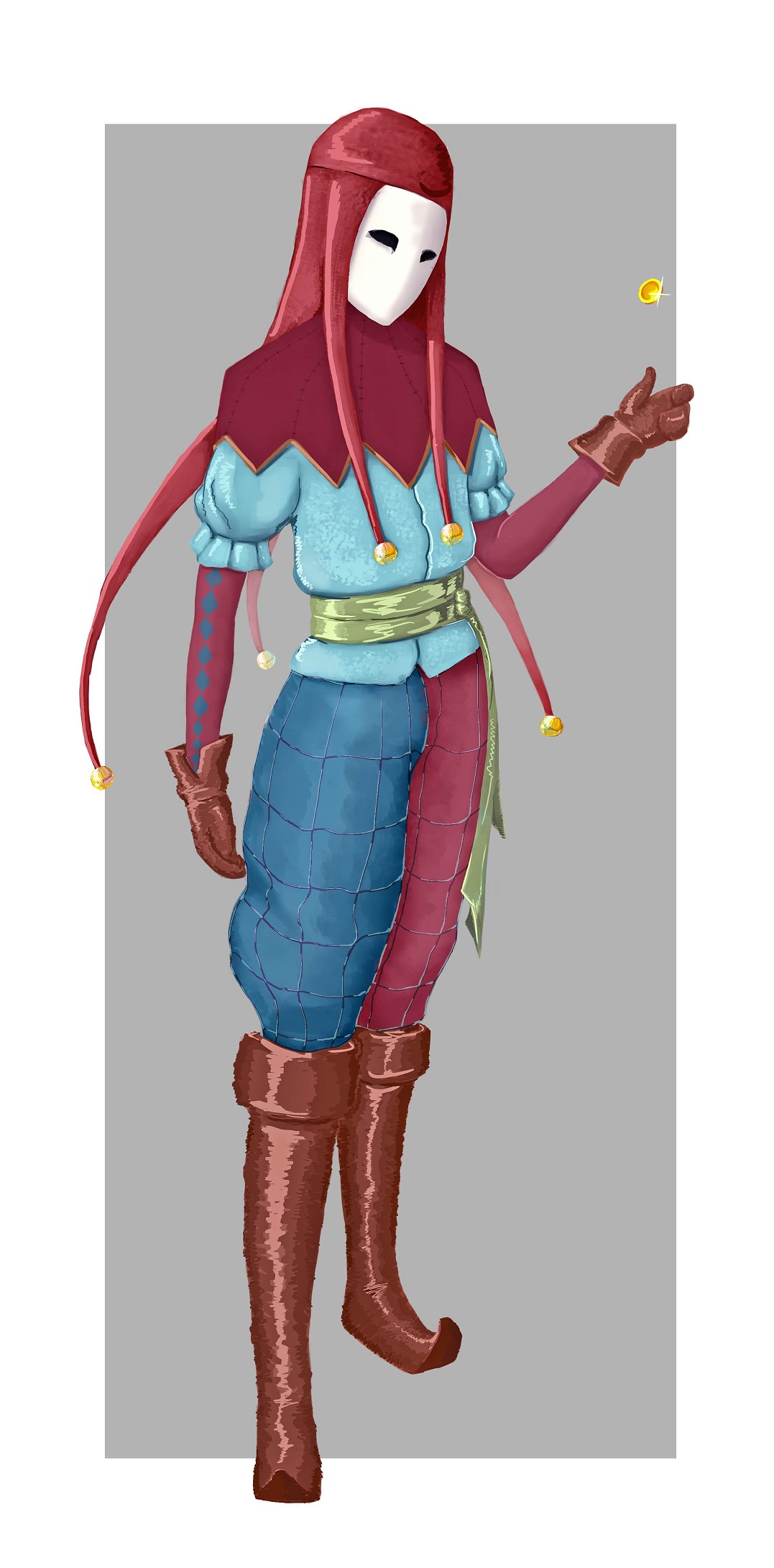
Domain Spells: Almost all the spells on this list aren’t normally available to Clerics and give you a very unique spellcasting build.
1st-Level: Disguise self and charm person are two of the best deception spells, allowing you to impersonate and manipulate with magic.
3rd-Level: Mirror image gives you a great edge in combat, avoiding several attacks over the course of its duration. Pass without trace is a great party buff for sneaking around.
5th-Level: Blink outclasses mirror image giving you a lower chance of taking damage from attacks, and dispel magic is a staple spell you’ll be glad to have constantly available.
7th-Level: Dimension door is a great teleport but takes up a high-level spell slot for what it does. Polymorph is an amazing transmutation spell with a ton of versatile options.
9th-Level: What a combo! Dominate person and modify memory. Magically compel someone to do something, and then make them forget that they did it. This is the epitome of what this class does.
Channel Divinity – Invoke Duplicity: This is great at low levels for increasing accuracy on your cantrips but considering most of your domain spells are self-targeting it’s hard to make more effective use of this.
Channel Divinity – Cloak of Shadows: One round of invisibility isn’t very useful compared to the real deal.
Blessing of the Trickster: You can’t use this on yourself, but you’ve got spells that make up for it. This ensures another heavy-armor user in your party doesn’t give your position away.
Divine Strike: Extra poison damage on your attacks gives you an edge in combat. Poison is a commonly resisted damage type, however.
Improved Duplicity: This ability turns your invoke duplicity ability into a powerful combat option. Spreading out and casting spells from different places will keep your real self well hidden and out of the line of fire.
TwilightTCoE
Another very, very strong Cleric domain. You have all the tools needed to fill each and every one of your class’ rolls in the party- protector/healer, front-line tank, and spell support. Twilight Clerics tread a thin line between light and dark, and make for good evil-aligned clerics as well.
Domain Spells: All your domain spells are solid additions to your list.
1st-Level: Faerie fire is the best counter to invisibility available to low-level parties and is never not useful. Sleep is a nice AoE control spell at low levels but drops off later on.
3rd-Level: Moonbeam is an efficient use of a spell slot, providing you with a distance action, and a handy way to reveal and deal with shapeshifters.
5th-Level: Tiny Hut is an adventurer’s best friend! Never fear spending the night in a dungeon again. Eliminate the overnight ambush with your personal hotel room.
7th-Level: Greater invisibility is hands down the best buff in the game, but not for a Cleric. If you’ve got a Rogue or Arcane caster to put it on and you’re set.
9th-Level: Both of these spells are neat, but you’ve got access to more appropriate spells from your main spell list.
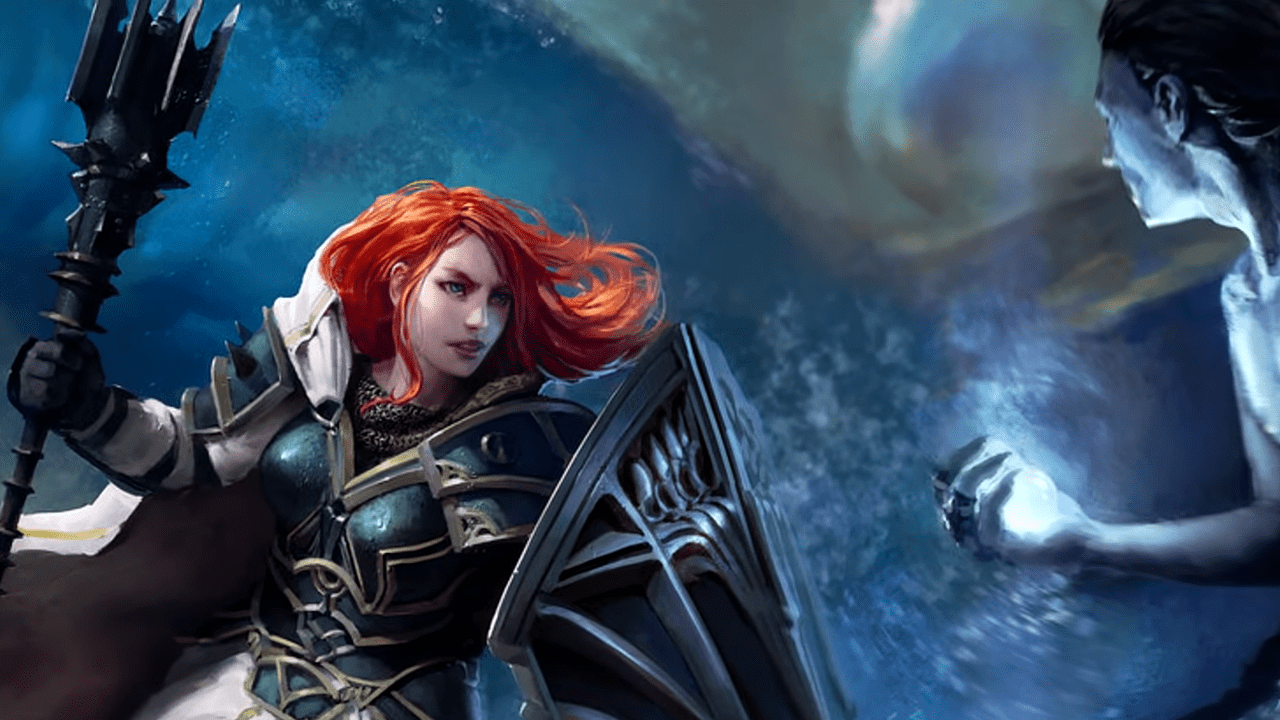
Bonus Proficiencies: Heavy armor and martial weapons make you qualifies to stand with Fighters and Barbarians on the front lines.
Eyes of Night: You get the best darkvision in the game and can share it with the whole squad.
Vigilant Blessing: Wow. Just wow. Just ask yourself “who in the party would benefit from going first every combat?” They do.
Channel Divinity – Twilight Sanctuary: An incredible defensive buff, granting temporary hit points or removing fear/charmed once per round without requiring any sort of action or concentration from you.
Steps of Night: Welcome to level 6, now you can fly. This is one of the earliest flight effects in the game, and the requirement for dim light means you can throw your cape over yourself and cast this in broad daylight.
Divine Strike: Your martial weapon proficiency will turn into a series of terrifying attacks with the added damage this ability gives you. The only tragedy is that you only get one attack per round with it.
Twilight Shroud: this basically gives your whole party +2 AC all the time.
War
The war Cleric is well suited to front line fighting and support for other front liners. Your spell selection is reminiscent of the Paladin’s abilities, granting bonuses to allies in combat.
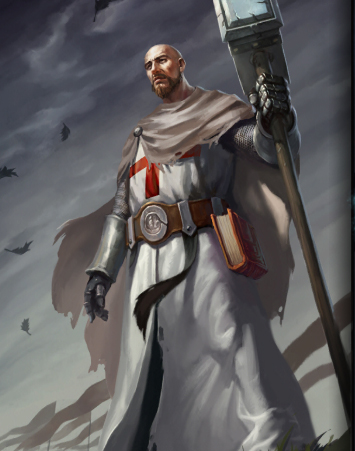
Domain Spells: Buffs abound! All your domain spells are great for increasing your own and your allies’ combat abilities.
1st-Level: Both of these spells are great at low levels, but wane over time. Watch your concentration requirements, as you can only have one active at once.
3rd-Level: Spiritual weapon is the best way to use your bonus action, doubly so once you get damage increases and buffs from other sources. Magic weapon is best at low levels before you or an ally have a true magic weapon available.
5th-Level: Crusader’s mantle is a great buff for all your friends. 5th level is when primary attackers gain an extra attack, so this effect is doubly welcome. Spirit guardians is a reliable damage source once you set it up.
7th-Level: Stoneskin gives you some resistance, but is minimally effective since it’s a concentration spell, and can end when it works. Freedom of movement is a situational spell that can mean life or death, so having it prepared is wise.
9th-Level: Flame strike is a Cleric staple, and your best AoE. Hold monster is strong when fighting a single opponent, but you’ll lose it against a mob.
Channel Divinity: Guided Strike: A nifty ability best used after you’ve gotten buffs and augmentations to your melee attack damage from spells and other class abilities.
Channel Divinity: War God’s Blessing: Much better option than the above, using your channel divinity to grant an ally (like a sneak attacking Rogue) a guaranteed hit.
Bonus Proficiencies: Martial weapons and heavy armor give you the edge you need to keep up with Fighters and Paladins on the front lines.
War Priest: Clerics typically have spells that make good use of their bonus actions. Until you get Divine Strike, you’re better served casting bonus action spells rather than making additional weapon attacks. Also, your limited to up to 5 attacks per day with this ability, assuming you max out your Wisdom.
Divine Strike: Other Cleric domains deal a specific type of damage, but given that you can carry multiple different weapons, and are proficient with all weapons you can change us your damage type based on which weapon you use.
Avatar of Battle: Considering you can take Heavy Armor Master as early as 1st level with a variant human build, and by this level you’re likely to fight much more magical enemies, this ability comes too little too late. The damage reduction is still welcome, as it will save you from mob damage.
Skills
Acrobatics: Not useful for Clerics.
Animal Handling: Useful for those of the Nature domain.
Arcana: Knowledge of magic and magical beasts.
Athletics: Jumping and climbing to get to those who need healing.
Deception: Only used with a Cleric of the Trickery domain.
History: Incidental, at best.
Insight: Being a good judge of character is important.
Intimidation: Not useful for Clerics.
Investigation: Not useful for Clerics.
Medicine: Your spells will do most of the heavy lifting but being knowledgeable about which sell to use is important. Additionally, if you get proficiency with a healer’s kit from your background this might come in handy.
Nature: Unless you’re in the Nature domain, you’re going to ignore this.
Perception: An important skill for any class, and your high Wisdom makes you good at keeping watch.
Performance: Not your responsibility.
Persuasion: Situationally useful, but not your responsibility.
Religion: Your primary jobs are healing and knowing all there is to know about deities.
Sleight of Hand: Not part of your job description.
Stealth: Heavy armor and stealth don’t mix.
Survival: You’re going to use magic for any survival needs and rely on a Ranger or a Druid for the rest.
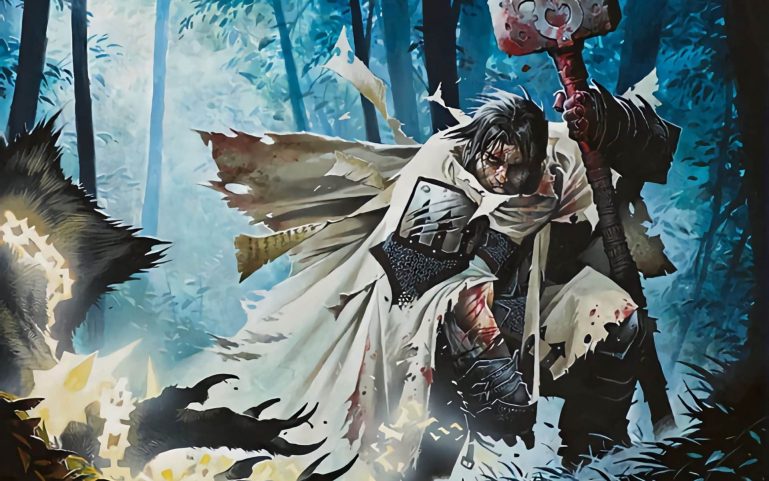
Backgrounds
Acolyte: Your go-to Cleric background. Insight and Religion are on your list, and you get two languages to boot.
Charlatan: Not useful for a Cleric.
City WatchSCAG: Insight is useful, but Athletics isn’t.
Clan CrafterSCAG: Insight, but not much else worthwhile.
Cloistered ScholarSCAG: If you really want to be a know-it-all priest, this is the right choice.
CourtierSCAG: Insight and persuasion are good if you’re the party spokesperson.
Criminal: Good for a Trickery domain Cleric with high Dexterity.
Entertainer: Nothing useful for Clerics.
Faction AgentSCAG: Versatile in skill selection and two languages.
Far TravelerSCAG: Perfect skill selection, an instrument, a skill, and a bonus languages.
FeylostTWBtW: Nothing in this background works well with Cleric.
FisherGoS: Nothing useful for Clerics.
Folk Hero: Nothing useful for Clerics.
Guild Artisan: Strictly worse than acolyte.
Haunted OneVRGtR: A decent list to choose from, but only a few things from your list.
Hermit: Two of your class skills, herbalism kit, and a language of your choice. A great alternative to Acolyte.
InheritorSCAG: Versatile skill selection, but not much else.
InvestigatorVRGtR: Insight is a great skill for Clerics, and the tools given here give you diversity among Clerics.
Knight of the OrderSCAG: Versatile skill selection, but not much else.
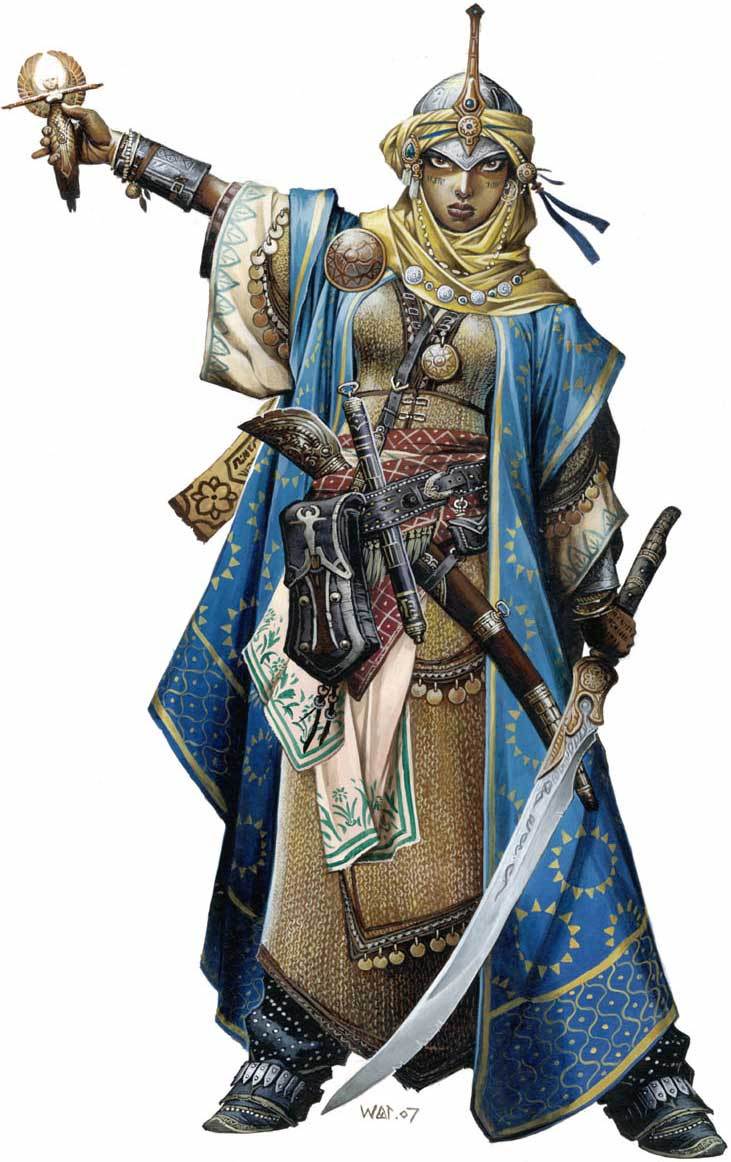
Lorehold StudentSACoC: Two skills on your list, and a selection of spells you can use well.
MarineGoS: Vehicle proficiency is great in an aquatic campaign, and Athletics will come in handy.
Mercenary VeteranSCAG: Athletics, but nothing else useful.
Noble: Nothing useful for Clerics.
Outlander: Athletics, and survival for the nature Cleric, but nothing else.
Prismari StudentSACoC: An aggressive option, granting you two elemental cantrips and
Quandrix StudentSACoC: This option give you the most well-rounded selection of skills and spells.
Sage: Arcana and History for the Brainy priest, but nothing else.
Sailor: A great choice in a seafaring campaign.
ShipwrightGoS: Great for a Forge domain Cleric, granting additional tools and abilities for crafting.
Silverquill StudentSACoC: Aside from access to silvery barbs the rest of this background is not useful for Cleric.
SmugglerGoS: Athletics and vehicles.
Soldier: Not really fitting for a Cleric.
Urban Bounty HunterSCAG: Possibly good for Trickery Clerics.
Urchin: Possibly useful for a Trickery cleric, but not appropriate elsewhere.
Uthgardt Tribe MemberSCAG: Athletics, but nothing else useful.
Waterdhavian NobleSCAG: Nothing useful for the Cleric.
Witchlight HandTWBtW: Nothing in this background works well with Cleric.
Witherbloom StudentSACoC: You already know the spells you gain at low levels, and the rest aren’t useful for Cleric.
Feats
Alert: Acting early in combat is beneficial for a support cleric looking to buff their allies before they take any actions in order to maximize offensive potential. For a strict healer, this is much less useful.
Athlete: Not useful for Cleric.
Actor: Not useful for Cleric.
Charger: Not useful for Cleric.
Crossbow Expert: Not useful for Cleric.
Defensive Duelist: Not useful for Cleric.
Dual Wielder: You’re typically going to use a one-handed weapon and a shield. Not useful for Cleric.
Dungeon Delver: Not useful for Cleric.
Durable: Good for that last push to 20 Constitution.
Elemental Adept: Nothing hurts more than rolling a handful of 1’s on a flame strike. Also useful for light and tempest domain clerics who cast a lot of elemental damage spells.
Grappler: Not useful for Cleric.
Great Weapon Master: If you’re a Tempest or a War domain Cleric and are using a two-handed weapon, you’re going to love this feat.
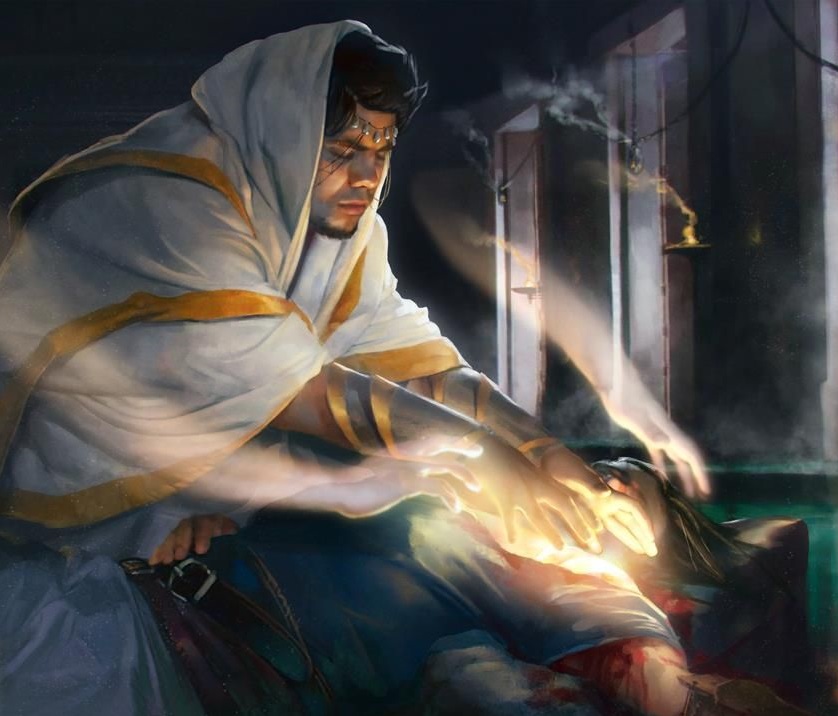
Healer: Given the opportunity to buy healer’s kits frequently, you’re directly converting cash into cure spells.
Heavily Armored: Good for a melee Cleric who isn’t already proficient in heavy armor.
Heavy Armor Master: At low levels, this makes a life domain Cleric nearly invincible, but its usefulness wears off once enemies start wielding magic weapons.
Heavily Armored: Good for a melee Cleric who isn’t already proficient in heavy armor.
Heavy Armor Master: At low levels, this makes a life domain Cleric nearly invincible, but its usefulness wears off once enemies start wielding magic weapons.
Inspiring Leader: Not useful for Cleric.
Keen Mind: Not useful for Cleric.
Lightly Armored: Not useful for Cleric.
Linguist: Not useful for Cleric.
Lucky: Always a good choice.
Mage Slayer: You’re a mage who can survive in melee. This bridges the gap between support caster and mage-hunter.
Magic Initiate: You’re going to need to have put a lot of work into Int or Cha to get any mileage out of spells not on your list, aside from Druid and Ranger lists. Hunter’s Mark could work for a melee-focused Cleric.
Martial Adept: Not useful for Cleric.
Medium Armor Master: Good for the default Cleric who doesn’t have access to heavy armor.
Mobile: Your bonus action is better reserved for spiritual weapon.
Moderately Armored: Not useful for Cleric.
Mounted Combat: Not useful for Cleric.
Observant: A great top off for your Wisdom.
Polearm Master: Tempest and War domains will benefit greatly from this.
Resilient: Constitution save proficiency and a little more resilience.
Ritual Caster: Not useful for Cleric.
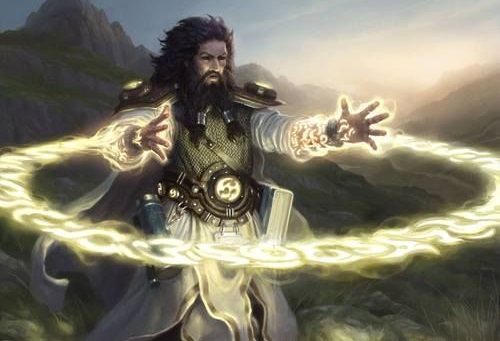
Savage Attacker: Not useful for Cleric.
Sentinel: A solid way to spend your reaction.
Sharpshooter: A lightly-armored Dexterity-build Cleric with longbow proficiency is a rarity, but if you find yourself in this situation, this is the feat for you.
Shield Master: Quite possibly the best way to up your Dexterity saves without actually being proficient. You’re going to use a shield anyway, so why not pick this up?
Skilled: A so-so feat for Clerics. More skills never hurt, but there are better options.
Skulker: Not useful for Cleric.
Spell Sniper: Not useful for Cleric.
Strixhaven InitiateSACoC: Magic Initiate is a better choice, and most of the spells provide by this feat are irrelevant to you anyway.
Strixhaven MascotSACoC: The positional swap ability allows you quick access to an ally who may need a close-range heal spell.
Tavern Brawler: Not useful for Cleric.
Tough: More hit points on the healer benefit the whole party.
War Caster: Hands down, the best feat for a melee Cleric.
Weapon Master: A good way to get better weapons on a caster build, but if you wanted to fight you would have taken a different domain.
Weapons and Armor
The armor you use as a Cleric will depend on the role you’re trying to fill in the party. As a primary healer, your job is to stay alive and make sure everyone else does too. If you have heavy armor proficiency, you’re going to want to wear full plate as soon as you can afford to pick up a suit. A shield is mandatory for most Cleric builds, as the +2 AC it provides makes a big difference.
For the standard Cleric, who has proficiency with Medium armor and shields, you’ll likely want to wear Half-plate with a shield, for an AC of 19. Half-plate is superior to Breastplate as long as you don’t care about disadvantage on stealth checks, which as a Cleric, you usually don’t.
For the rare Dexterity-based Cleric build, you’ll want to use Breastplate until you’ve maxedyou’re your Dexterity stat. Once you do, studded leather is the way to go, as it will provide you the highest AC bonus incorporating your Dexterity and won’t impose disadvantage on stealth checks. If you’re using ranged weapons, you’re probably holding a longbow so shields are out. Shield of faith is your only other option to increase your AC, granting you a maximum AC of 19 with 20 Dexterity.
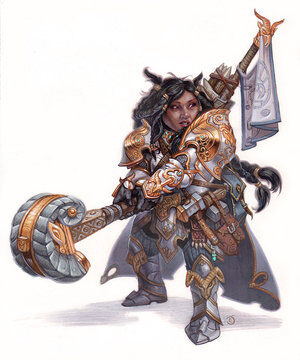
The default Cleric weapon is the quarterstaff, which you can wield one-handed with a shield, and is also versatile allowing you to drop your shield and hit for more damage. If you’re proficient with martial weapons, the best one-handed option is a warhammer or a longsword, again providing versatile damage. If you eschew the shield for a great weapon, you’ll likely want a greatsword. The math is more favorable for a greatsword providing consistent damage over a greataxe.
Magic
Cantrips
Guidance: You’re going to develop a habit of saying “Guidance” as soon as your dungeon master says the word “skill check.” Out of combat, this spell gets really great mileage.
Light: If you don’t have Darkvision, this is a must.
Mending: Useful, but unless you’re into the nitty gritty of equipment, this isn’t necessary.
Resistance: Bless is better as a preventive measure.
Sacred Flame: A Light domain mainstay. A ranged attack with a save attached means you’ll never roll at disadvantage.
Spare the Dying: When you’re out of healing spells, you can always fall back on this to keep your allies alive. It won’t keep them up, but it won’t let them down either.
Thaumaturgy: This is all flavor.
Toll the DeadXGtE: The superior Cleric cantrip for dealing damage.
Word of Radiance XGtE: A multi-target cantrip is rare, and this one is quite useful for a melee build Cleric who finds themself surrounded.
1st Level
Bane: A save to resist AND concentration to maintain makes this rather unreliable.
Bless: The definitive buff spell. Cast it first thing in a fight and you’ll see results fast.
Ceremony XGtE: A great spell for flavor, but it only works once.
Command: You’ll need to be clever with your commands, but “come” and “run” are solid, which could provoke an attack of opportunity, spring a trap, or ruin enemy positioning.
Create or Destroy Water: It’s tough to find a useful application for this spell that another effect or ability can’t replicate.
Cure Wounds: A Cleric without this is no Cleric at all.
Detect Evil and Good: Mostly flavorful. Nothing a good Insight check can’t do.
Detect Magic: Decent for its ritual tag, but typically you’re going to find a wand or other trinket to cast this frequently. If you’ve got a Warlock in the party, you don’t need this.
Detect Poison and Disease: Detection spells are situational at best. This is less useful that the others.
Guiding Bolt: High damage for a low-level spell, and when used at the right time (See: Sneak Attack) can lead to a huge damage increase.
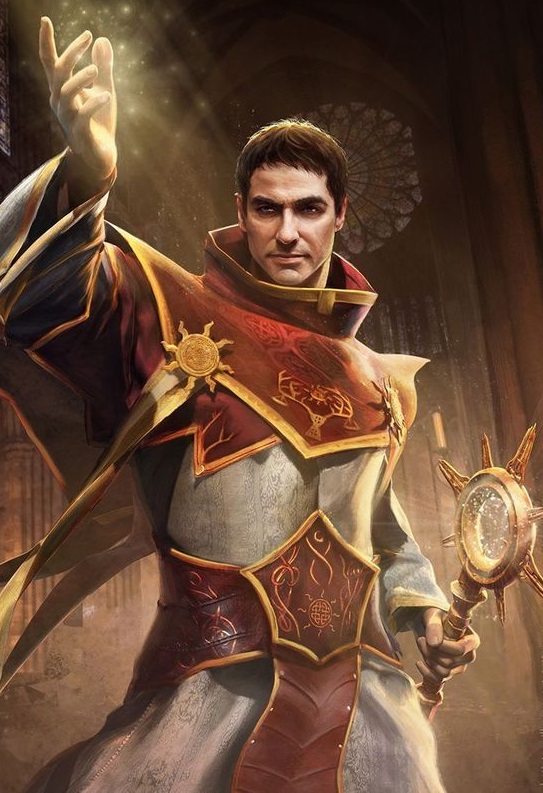
Healing Word: A bonus action ranged healing spell that scales with level. This is the most important Cleric spell at this level. It will save your team quite a bit.
Inflict Wounds: A surprisingly high amount of damage for a first level spell, but its melee range is a drawback.
Protection from Evil and Good: It’s hard to justify spending your concentration on this spell long term, but if you need to snap an ally out of an effect at low levels, this is a good go-to.
Purify Food and Drink: It’s good when cast as a ritual, but it takes up a prepared spell slot to little effect in combat.
Sanctuary: A concentration-free way to ward yourself or an ally. Use it as a bonus action in melee after you attack to set up a speed bump for your opponent.
Shield of Faith: It’s hard to weigh this against Bless, but situationally this is pretty good at low levels.
2nd Level
Aid: A concentration-free buff that is strong at low levels. Once you get to higher levels, 5hp isn’t
Augury: Spells that predict the future are not rooted in rules, so their subjective nature makes them hard to use.
Blindness/Deafness: The save every round to break free of this concentration debuff makes it unreliable
Borrowed KnowledgeSACoC: Burning a second level spell slot for a self-only temporary skill proficiency isn’t too great. The only time this is worth it is if you’re going to spend an hour doing a repetitive task, making many of the same roll. Otherwise, get a specialized party member to perform said task, or use guidance, a cantrip, which can be cast on anyone.
Calm Emotions: This is very situationally useful.
Continual Flame: Taking light as a cantrip is more useful.
Enhance Ability: This spell got a huge decrease in power and viability in this edition.
Find Traps: For lack of a rogue, this is the only sure-fire way to avoid getting sliced in half without seeing it coming while walking through a dungeon.
Gentle Repose: A creepy and weird spell at this level, but once you get access to a resurrection spell it will buy you time to collect the cash needed to perform a revival.
Hold Person: On one hand, paralyzing a foe makes killing them a lock, but on the other hand, they get to save each turn to escape.
Kinetic JauntSACoC: A bonus action speed boost and escape tactic that is outclassed by expeditious retreat, a 1st-level spell which lets you dash. This is a corner-case escape a “red-rover” line of enemies trying to keep you in place.
Lesser Restoration: When you need it, you need it. When you don’t, it’s wasted.
Locate Object: The short range makes it much less useful unless you’re in a confined environment.
Prayer of Healing: The best healing magic to use outside of combat.
Protection from Poison: Situational preparation for non-dwarves.
Silence: This shuts down almost any caster and overcomes your disadvantage on stealth. The drawbacks are that the spell is stationary, and requires concentration.
Spiritual Weapon: Clerics get a bonus action attack that other classes covet at level 3. As a spell attack, it will likely be a better attack option than any weapon you’re proficient with. It scales with level, but at a steep cost. Note that it doesn’t require concentration, so it’s very reliable.
Warding Bond: If you don’t want to bother with ranged healing, cast this on a friend and stay out of sight. Heal yourself when you need to.
Zone of Truth: Situational at best, nothing a good Insight check or a bit of old-fashioned torture can’t accomplish.
3rd Level
Animate Dead: Good Clerics need not apply, but this great buff doesn’t require concentration.
Beacon of Hope: At higher character levels, this is a great way to maximize your heal spells. It’s wasted in combat, however. You’re going to have better ways to spend your concentration.
Bestow Curse: This debuff makes the target more susceptible to future debuffs. Unless you’ve got a gang of casters willing to hold concentration on a single big bad, this isn’t very strong.
Clairvoyance: Situationally useful.
Create Food and Water: Situationally useful. Plot-wise, your Cleric can open a food truck or a homeless shelter with this one.
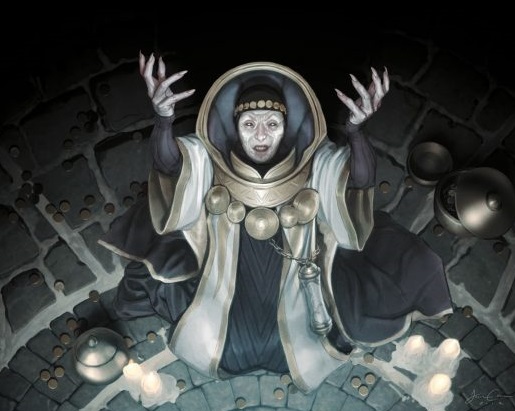
Daylight: A solid spell against the more dangerous undead. It has a long duration and doesn’t require concentration.
Dispel Magic: It’s a debuff, a lockpick for a magical door, and an off switch for most effects.
Feign Death: There are creative uses for this spell, but they are few and far in between.
Glyph of Warding: A great way to lay a trap for anyone pursuing you, or to set up a wildcard alarm during a long rest.
Life Transference XGtE: Life Clerics want to use this spell other domains will have trouble justifying using this over cure wounds at the same level.
Magic Circle: Expensive to cast, short duration.
Mass Healing Word: The best in-combat heal. Mass healing at range.
Meld into Stone: Another spell with a lot of creative uses. It gives a Cleric stealth, recon, and passwall abilities.
Protection from Energy: Another spell that took a big hit in this edition. Single target and concentration.
Remove Curse: Similar to lesser restoration, when you need it, it’s the only spell for the job.
Revivify: This is your first “save point” spell. If each party member can afford to buy and carry 500GP worth of insurance diamonds, you can bring them back from the brink within a minute of their passing.
Sending: Your magical cell phonies great for a world-hopping adventure to keep in touch with allies all along the Sword Coast.
Speak with Dead: Situational at best.
Spirit Guardians: This spell is an absolute powerhouse for a combat Cleric.
Spirit ShroudTCoE: Spiritual weapon is much better, doesn’t require concentration, and is a level lower.
Tongues: When it comes up, it’s nice. Otherwise it’s lackluster.
Water Walk: Situational.
4th Level
Banishment: With both a save and concentration requirements being drawbacks, this spell is still potentially encounter-ending. Facing a powerful opponent and a bunch of minions? remove the boss from the fight while your allies mop up the adds, and plenty of time to prepare for his return or escape unharmed.
Control Water: Situational. In an aquatic environment this spell can be devastating, but otherwise it’s basically useless.
Death Ward: A great daily buff that ensures you can save a higher level and much more costly resurrection spell. Long duration and no concentration makes it even more appealing.
Divination: Predicting the future is very subjective on the part of the DM. Pass.
Freedom of Movement: It’s worth having prepared. It will save your life when you need it most.
Guardian of Faith: A fortress-builder’s godsend. Also a great spell for taking a long rest in hostile territory. It will prevent ambush while you snooze.
Locate Creature: The short range makes it difficult to use unless someone’s hiding in the room with you.
Stone Shape: A useful utility spell in many dungeon situations. The permanent duration of the stone you shape makes this the best spell for a fortress builder. It will take a while, but brick by brick a cleric can build a castle.
5th Level
Commune: A very subjective spell, but since it’s a ritual you can use it as a more plot-friendly option without wasting a vital high-level spell slot.
Contagion: The fact that this spell does not require concentration makes it one of the best debuffs in the game. It allows a lot of saves, but if it hits, you’re going to be glad you used it.
Dawn XGtE: A great alternative to Flame Strike in that it’s a concentration duration AoE you can move each round as a bonus action. The effect allows for a Constitution save for half damage, but the wide area and repeatable nature make it a powerful spell. The only drawback is that it requires your concentration and your bonus action.
Dispel Evil and Good: The best use of this spell is against an enemy spellcaster who is casting a lot of debuffs, as you can cast break enchantment once per round on an ally you can touch. Also, against a group of extraplanar creatures you can spend round after round banishing them.
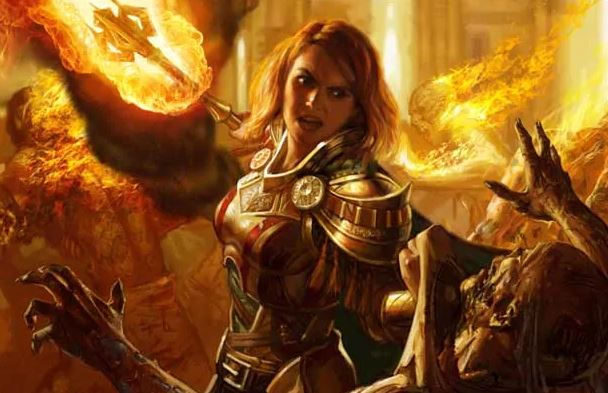
Flame Strike: The definitive Cleric damage spell. Dual type damage and a wide area make this extremely useful in al combat situations. Don’t forget that this spell is a cylinder, not just a radius so you can stack its effects against flying creatures circling overhead.
Geas: A 30-day concentration-free mind control spell which can effectively end an encounter against a single baddie if it sticks. As a bonus, if they resist it will slowly whittle them down with psychic damage.
Greater Restoration: If you’re stuck in a debuff, this is the only way out. Not usually worth keeping prepared, but when you need it, it’s a good thing you have access to it.
Hallow: With a duration of “until dispelled” you’re going to need this once and usually not again, given the expensive nature of this spell.
Holy Weapon: Creating a +1 magic weapon with 2d8 bonus damage that lasts for an hour is great for a Dexterity-based Cleric. Attack at range for extra magic damage, and if you get surrounded, you can use the secondary ability to burst nova in a 30 ft radius and blind your attackers in addition to dealing radiant damage. A versatile spell, with potent damage as well.
Insect Plague: Long duration and medium damage with a save for half. The biggest drawback is that the effect is stationary.
Legend Lore: This spell exists entirely for the DM to have an opportunity to read to you the pages and pages of fluff they’ve written to prepare for the game. This spell can be replaced by a well-rolled History check.
Mass Cure Wounds: Top-tier cure magic for the whole family!
Planar Binding: This is a great adventure hook. For 1,000 GP you can bring a celestial or a fiend to you, for a deal or desire. Be careful what you wish for. This spell can bring your party a powerful guest star for a boss fight or pull an on-demand boss fight directly from the lower planes.
Raise Dead: Until you get True Resurrection, this is your best revival spell. Pricey, but useful.
Scrying: Surveillance and foresight before a large encounter is important.
Summon CelestialTCoE: You’ve got two powerful options when you cast this spell. On defense, you’ve got bonus hit points coming your way. On offense, you’ve got an archer that can still tank for you, since who cares if a summon dies?
6th Level
Blade Barrier: Mediocre damage for the spell level. Three-quarters cover from attacks is useful though.
Create Undead: A potent summoning spell for the aspiring Necromancer. A great add on to animate dead in your arsenal of army-creation spells.
Find the Path: This is a glorified survival check.
Forbiddance: Situationally useful for the level. Great for a fortress-builder.
Harm: When you really need them dead, this is where you start. Tons of damage and great range.
Heal: A full heal for most of your party. A half-heal for a Barbarian.
Heroes’ Feast: An expensive spell, but very worth it before a big fight. The effects last for 24 hours.
Planar Ally: A very subjective spell (and potentially expensive!) based on the mood of your campaign and creativity (or cruelty) of your DM.
True Seeing: Expensive, but if you’re up against illusionists or shapeshifters there’s nothing better.
Word of Recall: A save-point for you and up to five-others. A great way to escape from a dungeon or return to one quickly.
7th Level
Conjure Celestial: This spell isn’t as potent as your other options when cast at 7th level. At 8th and 9th level, it becomes much more viable, given the options available. The concentration requirement is regrettable. Planar Ally might be a better option.
Divine Word: Banishment against an extraplanar foe and a powerful debuff against anything else.
Etherealness: You only get one 7th level spell per day, and this is one of the weaker ones. Good for extended reconnaissance, but Plane Shift is arguably better for the same purpose.
Fire Storm: Here’s the big Cleric AoE you’ve been waiting for. it’s a huge area that you can shape at will with pretty good damage, and a save for half. The only drawback is fire being the most commonly resisted damage type.
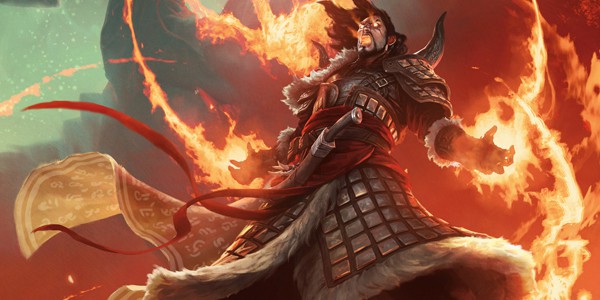
Plane Shift: A useful spell for long-distance transportation. This spell has an offensive use, however, using it this way requires both an attack roll and a save.
Regenerate: A creeping heal, and the only way to grow back lost limbs. A Cleric staple.
Resurrection: There isn’t much difference between this and raise dead other than the time requirement. If you’re prepared for a player to die, you’ll get away with using the lower level spell.
Symbol: An expensive spell to set up, mainly geared towards fortress-builders and trap-setters. The “until triggered” duration is key, allowing you to not waste daily resources on it. Extremely versatile.
Temple of the Gods XGtE: an amped-up version of Tiny Hut that is basically mandatory for adventuring on the lower planes.
8th Level
Antimagic Field: Completely shuts down spellcasters and gear-heads. It requires concentration, and you’ll be powerless in the area of effect as well, so use with caution.
Control Weather: It’s a dramatic and powerful spell, but not a spell that needs to be prepared daily.
Earthquake: In the same vein as Control Weather, you’re going to use this as part of an assault on a city rather than a spontaneous combat encounter. It does exactly what you want it to, which is situational wide-spread devastation.
Holy Aura: A powerful team buff, especially when fighting fiends or undead. The expensive material component isn’t consumed by the spell, so don’t let the price tag ward you off.
9th Level
Astral Projection: Unless you specifically need to go to the Astral Plane for some reason, this spell is just a more expensive Plane Shift.
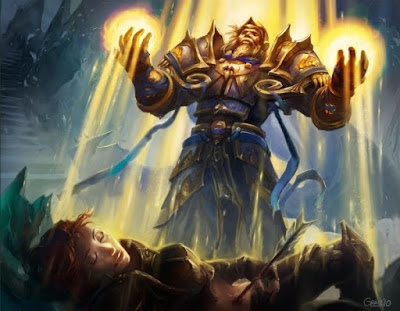
Gate: Yet another spell that took a big hit in this edition. Simply too many stipulations and requirements to be used effectively.
Mass Heal: The best and most powerful curative magic for you and yours.
True Resurrection: The best and most powerful resurrection spell.
Multiclassing
Barbarian: Rage ends most of your spells, so this is a tough sell.
Bard: The ability scores required for this combination are contradictory.
Druid: A two-level dip gets you Wild Shape, and the spells use Wisdom, but there isn’t a lot of synergy here when you consider how casting and Wild Shape work together at low levels.
Fighter: One level up front gets you full weapon and armor proficiencies. Two get you Action Surge, which lets you double up on spells in a round, and a fighting style which is great for a melee build.
Monk: Monk multiclass is the correct way to build a Dexterity-based Cleric.
Paladin: Smite, weapon proficiencies, and more on-theme spells for a holy warrior.
Ranger: Hunter’s mark is a great addition to any character who fights with weapons. Two levels for a fighting style makes a melee cleric a fearsome combatant.
Rogue: Cunning Action gives Clerics a ton of bonus action options they don’t normally have.
Sorcerer: Not useful for Cleric.
Warlock: Not useful for Cleric.
Wizard: Not useful for Cleric.
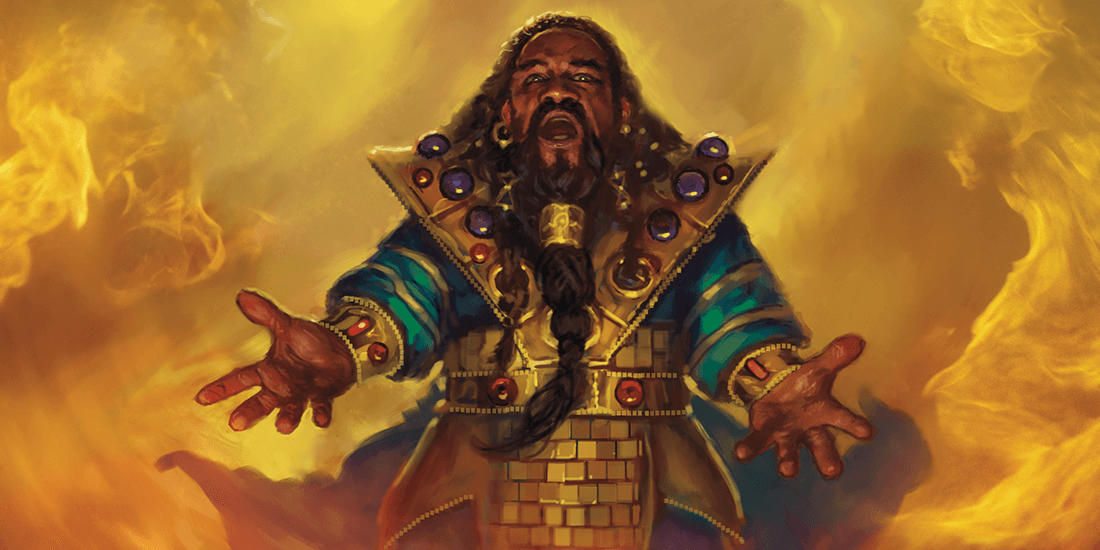
References
DMG Dungeon Master’s Guide
EGtW Explorer’s Guide to Wildemount
ERLW Eberron: Rising from the Last War
EEPC Elemental Evil Player’s Companion
GGtR Guildmasters’ Guide to Ravnica
MM Monster Manual
MToF Mordenkainen’s Tome of Foes
PHB Players Handbook
SCAG Sword Coast Adventurer’s Guide
TP Tortle Package
VGtM Volo’s Guide to Monsters
XGtE Xanathar’s Guide to Everything
Is the D&D cleric class not your thing?
Check out our comprehensive guide to all the D&D 5E classes and how to choose one that best suits the character you’d like to play.





